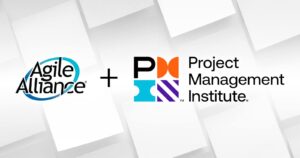When the market slows down, Agile doesn’t stop — it shifts gears.
If you’re on an Agile Team or part of an Agile Release Train (ART), reduced feature demand doesn’t mean reduced value. It’s actually a powerful opportunity to refocus, rebuild, and reinvest in what matters most.
Here’s how Agile organizations can stay impactful — even when customer delivery slows.
| Work Type | What to Focus On |
|---|---|
| Technical Debt | Reduce friction in delivery, simplify codebases |
| Maintenance | Improve system reliability, monitoring, and supportability |
| Refactoring | Re-architect for scalability and testability |
| Innovation | Explore new tech, ideas, or business models |
Treat this as a strategic reset — one that builds velocity for when demand rebounds.
2. Invest in Technical Excellence
This is the time to:
-
- Refactor legacy code
-
- Upgrade CI/CD pipelines
-
- especially with the use of automated testing
-
- also by automating environment provisioning
-
- Upgrade CI/CD pipelines
-
- Improve test coverage
-
- Modernize infrastructure (cloud, containers, microservices)
These efforts don’t just keep teams busy — they accelerate future delivery.
3. Build Team Capability
Use the spare capacity to grow stronger:
-
- Encourage cross-training and T-shaped skills
-
- Facilitate deeper retrospectives and team health checks
-
- Update team norms and Definitions of Done
-
- Nurture internal coaching and mentorship
Strong teams built during quiet times become high-performers under pressure.
4. Deepen Customer Understanding
Fewer sprints? More space to listen:
-
- Run empathy interviews and discovery workshops
-
- Analyze underused features or workflows
-
- Validate assumptions around value or user behavior
Great products come from great insights — and those often emerge when the delivery engine slows down.
5. Fuel Innovation
Many great companies and ideas were born in downturns. Agile teams can:
-
- Host hackathons and innovation days
-
- Explore AI/ML, automation, or new service models
-
- Build internal tools to streamline future work
-
- Undertake experiments to validate new ideas and identify completely new opportunities (products, services, features… etc.)
When things are uncertain, experiment. That’s how Agile stays resilient.
6. Make the Work Visible
Release Train Engineers, Scrum Masters, and team leads:
Ensure your teams’ impact is seen — even when it’s not a shiny feature release.
✅ Showcase reduced technical debt
✅ Highlight test automation or stability improvements and how these impact Flow Metrics
✅ Track learnings from innovation spikes
✅ Share customer insights from discovery
Downturns test leadership, not just delivery.
Final Thought: Downturns Aren’t Downtime
In Lean-Agile thinking, all work types matter — not just new features.
Downturns are a chance to build a stronger foundation, foster smarter teams, and drive innovation that positions you for success when the market turns again.
📈 Agile teams that invest during a slowdown accelerate when opportunity returns.
Note that we did not get into cost-cutting strategies in this article, as that is a whole different topic. We can certainly provide guidance for that upon request (see below).
Let’s connect.
We help Agile teams, ARTs, and organizations maximize value delivery — in any market. If you’d like to chat about Agile resilience strategies or Flow-based work planning and optimization, drop us a message.





